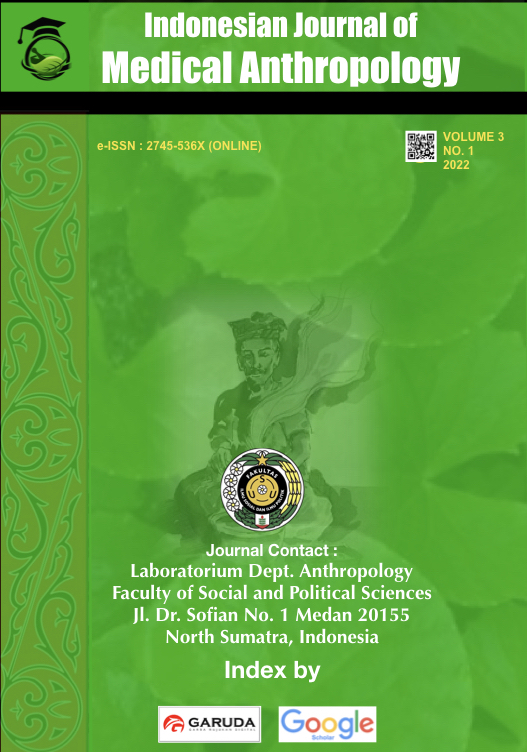Nutritional Ignorance: Dietary Habit of Under-Five Children With Stunted Growth in Labotan Kandi Village, Banggai Regency, Central Sulawesi Islands
DOI:
https://doi.org/10.32734/ijma.v3i2.9574Abstract
Stunting in under-five children is mostly due to unbalanced nutritional intake. Stunting is a health problem that requires further treatment. Taking care of the diet is a shortcut to the improvement of child nutrition and growth. This study aimed to examine the dietary habits formed by parents of under-five children with stunted growth. The study was conducted in Labotan Kandi Village, South Bulagi District, Banggai Islands Regency, Central Sulawesi. The data were collected through a series of observations, in-depth interviews, and documentation. This research was carried out from July to August 2022 by conducting interviews with 18 mothers of children under five years that fall into the stunting category (based on weighing data of February 2022). The results show that the formation of dietary habit in under-five children with stunted growth is done in simple and careless manners. Children mainly consume tubers in their daily diet, including bete, kela, ndeke, kasibi, and ubi Banggai. Access to fruits and vegetables (such as chayote, papaya, and ferns leaves) and animal protein (such as fish, chicken, beef, and pork) is still very limited, and they cannot be accessed every day. As long as the child is quiet, does not cry, and eats till full, parents no longer think about the nutritional needs that must be met by their children who fall into the stunting category.
Keywords: Under-5 Children, Labotan Kandi Village, Eating Behavior
Downloads
Published
How to Cite
Issue
Section
Copyright (c) 2022 Indonesian Journal of Medical Anthropology

This work is licensed under a Creative Commons Attribution-ShareAlike 4.0 International License.










